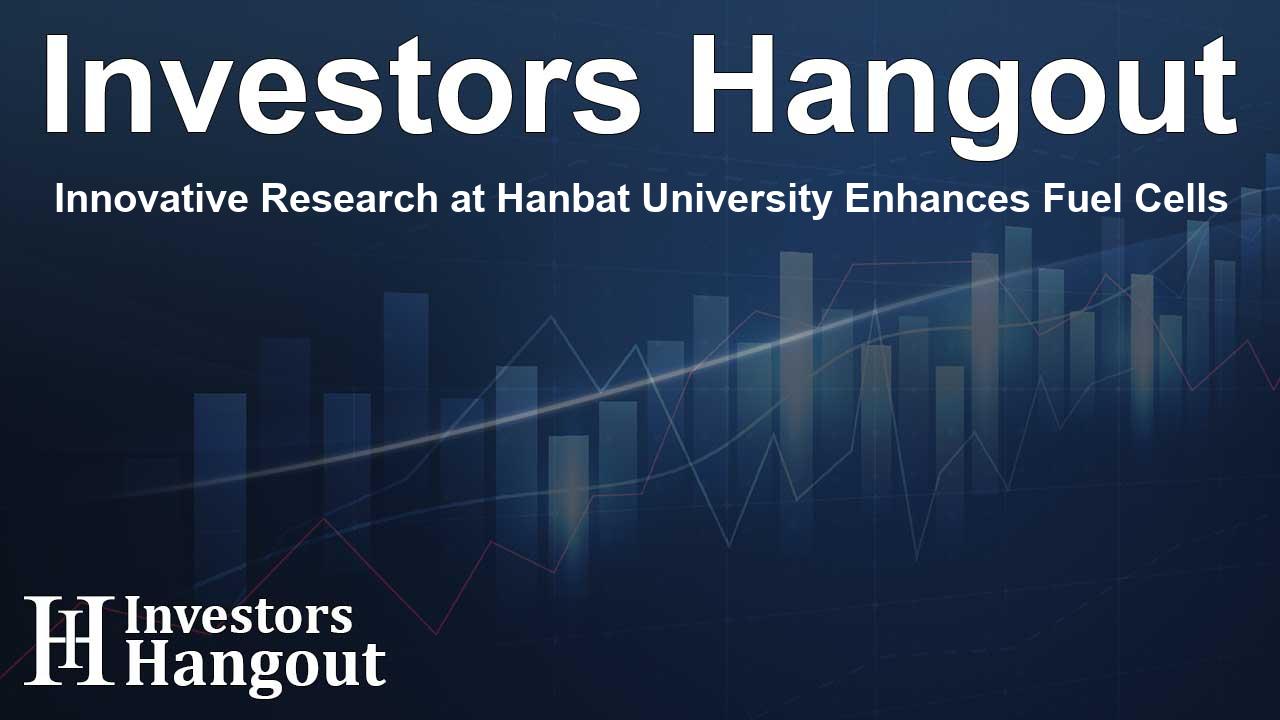Innovative Research at Hanbat University Enhances Fuel Cells

Revolutionizing Fuel Cell Technology
Researchers at Hanbat National University are making waves in the field of energy with their innovative approach to enhancing the performance of solid oxide fuel cells (SOFCs). These cells represent a promising avenue for clean energy solutions, known for their efficiency and ability to operate on diverse fuels. A key focus of their work involves cobalt (Co)-doped rare-earth layered perovskite oxides, which have emerged as highly effective materials for low- to medium-temperature SOFC applications due to their superior electrochemical properties.
The Challenge of Stability
Despite their advantages, solid oxide fuel cells have faced a significant challenge: long-term stability of the electrodes. In an effort to improve this aspect, researchers have traditionally looked at strategies such as substituting cobalt with iron (Fe) and promoting the growth of cobalt nanoparticles via a process called metal exsolution. Historically, this process has only been observed in high-temperature reducing environments, which posed limitations when considering actual operational conditions of SOFC cathodes.
A New Perspective on Metal Exsolution
A breakthrough was achieved by a dedicated research team led by Professor Junghyun Kim from the Department of Advanced Materials Engineering. They have presented compelling experimental evidence for cobalt exsolution in high-temperature oxidizing environments, challenging the older perceptions prevalent in the field. Their findings provide a fresh perspective on how these solid oxide fuel cells can be optimized, potentially leading to advancements in fuel cell designs.
Key Findings and Implications
The team's research centered around analyzing the electrochemical properties of two specific layered perovskite structures: SmBa0.45Sr0.5(Co1-xFex)1.9O5+d (SBSCF 1.9) and SmBa0.5Sr0.48(Co1-xFex)2.05O5+d (SBSCF 2.05). Remarkably, two formulations were highlighted for showcasing superior electrochemical performance, one with 30% iron substitution and another with 50% iron substitution. When subjected to oxidizing atmospheres at elevated temperatures, these samples demonstrated cobalt exsolution occurring beyond the typical 700 °C threshold, confirming their theory.
Mechanism of Cobalt Exsolution
At high temperatures within oxidizing conditions, the research indicates that while Co-O bonds become unstable, Fe-O bonds maintain integrity. This results in the diffusion of oxygen atoms, generating oxygen vacancies within the material. Co and these vacancies then accumulate on the surface, facilitating Co-exsolution, with increased temperatures contributing to a greater number of cobalt exsolution particles.
Performance Advantages
Interestingly, the sample with 30% iron substitution, SBSCF 1.9-0.3, was found to generate smaller, more abundant cobalt particles, leading to lower area specific resistance (ASR) and enhanced oxygen reduction reaction (ORR) activity. This performance boosts can be attributed to its higher concentration of surface oxygen vacancies, stemming from its relatively lower iron content, along with elevated cobalt proportions.
Professor Kim emphasized the significance of their results, stating, "The formation of finely dispersed exsolved Co particles is crucial for optimizing electrochemical performance in SOFC cathodes." The implications of this research extend beyond fuel cell applications, suggesting potential benefits in oxygen separation membranes and environmental catalysis technologies aimed at advancing clean air initiatives.
A Bright Future for Fuel Cell Research
This work represents a vital stride toward enhancing fuel cell efficiency and performance. It holds the promise of leading to next-generation designs that cater to an increasing global demand for sustainable energy sources. As researchers at Hanbat National University continue to explore the potential uses of cobalt exsolution, the future of solid oxide fuel cells looks promising.
Frequently Asked Questions
What is the focus of the Hanbat National University research?
The research focuses on improving the performance and stability of solid oxide fuel cells using cobalt exsolution techniques.
How does cobalt exsolution benefit fuel cells?
Cobalt exsolution enhances the electrochemical performance by optimizing the structural properties of the electrodes, thereby improving their efficiency.
What are solid oxide fuel cells known for?
Solid oxide fuel cells are recognized for their high efficiency, operational flexibility, and ability to utilize various fuels.
Why is long-term stability important in fuel cells?
Long-term stability is critical for the practical application of fuel cells, ensuring they maintain performance over their operational lifespan.
What future applications could result from this research?
The research could lead to advancements in clean energy technologies, including oxygen separation membranes and innovative catalytic systems.
About The Author
Contact Hannah Lewis privately here. Or send an email with ATTN: Hannah Lewis as the subject to contact@investorshangout.com.
About Investors Hangout
Investors Hangout is a leading online stock forum for financial discussion and learning, offering a wide range of free tools and resources. It draws in traders of all levels, who exchange market knowledge, investigate trading tactics, and keep an eye on industry developments in real time. Featuring financial articles, stock message boards, quotes, charts, company profiles, and live news updates. Through cooperative learning and a wealth of informational resources, it helps users from novices creating their first portfolios to experts honing their techniques. Join Investors Hangout today: https://investorshangout.com/
The content of this article is based on factual, publicly available information and does not represent legal, financial, or investment advice. Investors Hangout does not offer financial advice, and the author is not a licensed financial advisor. Consult a qualified advisor before making any financial or investment decisions based on this article. This article should not be considered advice to purchase, sell, or hold any securities or other investments. If any of the material provided here is inaccurate, please contact us for corrections.
